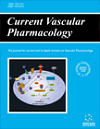
Full text loading...
We use cookies to track usage and preferences.I Understand

Complex coronary lesions have been an understudied aspect of coronary artery disease in elderly patients. Oxidative stress and inflammation may be implicated in the pathogenesis of complex coronary lesions.
The aim of this study is to investigate the complex interplay between pro-oxidative stress response, pro-inflammatory response, and complex coronary lesions in elderly patients.
Enzyme-linked immunosorbent assays for the detection of serum biomarkers [reactive oxygen species (ROS), malondialdehyde (MDA), tumor necrosis factor-α (TNF-α), interferon-gamma (IFN-γ), superoxide dismutase (SOD) activity, total antioxidant capacity (TAC), transforming growth factor beta (TGF-β) and interleukin-4 (IL-4)] were performed in elderly patients with complex coronary lesions.
The levels of pro-oxidative stress and pro-inflammatory markers (ROS, MDA, TNF-α and IFN-γ) were increased in the complex coronary lesion group when compared with the non-complex coronary lesion group (P < 0.01) in elderly patients. Anti-oxidative stress and anti-inflammatory markers (SOD activity, TAC, TGF-β, and IL-4) were decreased in the complex coronary lesion group when compared with the non-complex coronary lesion group (P < 0.01) in elderly patients.
Our findings suggest that the pathogenesis of complex coronary lesions may involve pro-oxidant/anti-oxidant and pro-inflammation/anti-inflammation imbalance, as well as the interplay between oxidative stress and inflammation in elderly patients.

Article metrics loading...

Full text loading...
References


Data & Media loading...